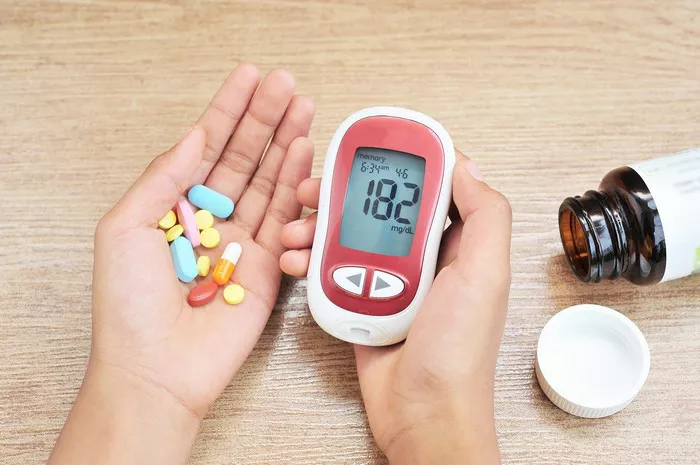Understanding the Glycemic Index (GI):
The Glycemic Index (GI) is a numerical scale that ranks carbohydrates based on how quickly they raise blood glucose levels after consumption. This scale ranges from 0 to 100, with pure glucose assigned a GI of 100, representing the standard for fast-acting carbohydrates. Foods with a high GI (70 or above) cause a rapid spike in blood sugar levels, while those with a low GI (55 or less) result in a slower, more gradual increase in blood sugar.
Low GI foods are particularly beneficial for individuals seeking to manage blood sugar levels effectively, as they help prevent sharp fluctuations in glucose and insulin levels. This steadier rise and fall in blood sugar can contribute to better overall blood sugar control, potentially reducing the risk of insulin resistance, type 2 diabetes, and other metabolic disorders.
List of Low Glycemic Fruits:
Cherries: Cherries boast a low GI, making them a suitable choice for those monitoring blood sugar levels. They are also rich in fiber, vitamin C, and antioxidants, which promote overall health and may reduce inflammation.
Grapefruit: Known for its tangy flavor, grapefruit is another low GI fruit packed with nutrients like vitamin C, fiber, and various antioxidants. Consuming grapefruit may also aid in weight management due to its potential appetite-suppressing effects.
Apricots: With their sweet taste and velvety texture, apricots provide a low GI option for those seeking to control blood sugar levels. They are a good source of fiber, vitamin A, and potassium, supporting digestive health and immune function.
Pears: Pears offer a delicate sweetness and are low on the GI scale, making them a smart choice for individuals watching their blood sugar. They contain fiber, vitamin C, and potassium, which promote heart health and digestive regularity.
Apples: Apples are not only delicious but also low in GI, making them a popular choice for individuals managing blood sugar levels. They are rich in fiber, particularly soluble fiber, which can help stabilize blood sugar and improve digestive health.
Oranges: Oranges are not only refreshing but also low GI, providing a steady release of glucose into the bloodstream. They are an excellent source of vitamin C, fiber, and antioxidants, supporting immune function and skin health.
Plums: Plums offer a burst of sweetness and are low on the GI scale, making them a suitable option for blood sugar control. They are also rich in fiber, vitamin C, and antioxidants, which promote gut health and may reduce the risk of chronic diseases.
Strawberries: Strawberries are not only low GI but also packed with fiber, vitamin C, and antioxidants. Their vibrant red color signifies the presence of anthocyanins, compounds with anti-inflammatory and heart-protective properties.
Peaches: Peaches provide a juicy, low GI option for individuals mindful of their blood sugar levels. They are rich in fiber, vitamin C, and antioxidants, which support skin health and may reduce the risk of certain cancers.
Grapes: Grapes offer a convenient and low GI snack option, providing natural sweetness without causing rapid spikes in blood sugar. They are also rich in resveratrol, an antioxidant that may offer protection against heart disease.
Nutritional Information:
In addition to their low GI status, these fruits offer a range of essential nutrients that contribute to overall health and well-being. Here’s a closer look at the nutritional profiles of each:
Cherries: Cherries are a good source of fiber, vitamin C, potassium, and antioxidants such as anthocyanins and quercetin. These compounds have been associated with reduced inflammation, improved sleep quality, and enhanced exercise recovery.
Grapefruit: Grapefruit is rich in vitamin C, fiber, and various antioxidants, including beta-carotene and flavonoids. It also contains compounds like naringin and naringenin, which have been studied for their potential to lower cholesterol levels and promote weight loss.
Apricots: Apricots are packed with fiber, vitamin A, vitamin C, and potassium. They also contain phytochemicals like carotenoids and flavonoids, which may help protect against age-related macular degeneration and support heart health.
Pears: Pears provide a good source of fiber, vitamin C, and potassium. They also contain antioxidants such as quercetin and epicatechin, which have been linked to improved heart health and reduced risk of certain cancers.
Apples: Apples are rich in fiber, particularly pectin, which can help regulate blood sugar levels and promote digestive health. They also contain vitamin C, antioxidants, and flavonoids, which may reduce the risk of chronic diseases.
Oranges: Oranges are an excellent source of vitamin C, fiber, and antioxidants such as flavonoids and beta-carotene. They also contain hesperidin, a flavonoid with anti-inflammatory and cardiovascular benefits.
Plums: Plums are high in fiber, vitamin C, and antioxidants like phenolic compounds and anthocyanins. They also contain sorbitol, a natural sugar alcohol that may help regulate blood sugar levels and improve digestive health.
Strawberries: Strawberries are packed with fiber, vitamin C, and antioxidants such as ellagic acid and quercetin. They also contain anthocyanins, which have been shown to improve cognitive function and protect against age-related decline.
Peaches: Peaches are a good source of fiber, vitamin C, and antioxidants such as chlorogenic acid and lutein. They also contain beta-carotene, which is converted into vitamin A in the body and plays a crucial role in vision health.
Grapes: Grapes are rich in antioxidants such as resveratrol, quercetin, and catechins, which have been associated with numerous health benefits, including improved heart health and reduced inflammation. They also provide fiber, vitamin C, and potassium.
Portion Sizes:
While low GI fruits can be a valuable addition to a balanced diet, it’s essential to practice portion control to avoid overconsumption of carbohydrates, which can still impact blood sugar levels. One serving of fruit is typically equivalent to one medium-sized piece or a half cup of chopped fruit. For fruits like grapes and berries, one serving is about a cup.
It’s also important to consider the overall carbohydrate content of your meals and snacks, as well as factors such as physical activity level and individual metabolic response. Consulting with a registered dietitian or healthcare professional can help determine appropriate portion sizes and meal planning strategies tailored to your specific needs and goals.
Incorporation into Diet:
Incorporating low GI fruits into your diet can be both delicious and nutritious. Here are some simple ways to enjoy these fruits as part of a balanced eating plan:
- Snack Smart: Enjoy a piece of fruit as a mid-morning or afternoon snack to help curb hunger and stabilize blood sugar levels. Pairing fruit with a source of protein, such as Greek yogurt or nuts, can enhance satiety and provide a more balanced nutrient profile.
- Add to Meals: Incorporate sliced fruits like apples, pears, or strawberries into salads, oatmeal, or yogurt bowls for added flavor and texture. You can also blend fruits into smoothies or sauces for a nutritious boost.
- Dessert Alternatives: Use fruits like berries or grilled peaches as a natural sweetener in desserts or enjoy them on their own as a healthier alternative to sugary treats. Experiment with different fruit combinations to create satisfying and nutrient-rich desserts.
- Hydration: Stay hydrated by enjoying hydrating fruits like oranges, watermelon, or grapes as a refreshing snack or by adding them to infused water or homemade popsicles.
By incorporating a variety of low GI fruits into your diet, you can enjoy the numerous health benefits they offer while maintaining optimal blood sugar control and overall well-being.
Potential Interactions:
It’s essential to be aware of any potential interactions between certain fruits and medications. For example, grapefruit contains compounds that can interfere with the metabolism of certain medications, including some statins used to lower cholesterol levels. Consuming grapefruit or grapefruit juice while taking these medications can lead to increased blood levels of the drug, potentially increasing the risk of side effects.
If you’re taking medications, especially those known to interact with specific foods, it’s crucial to discuss your dietary habits with your healthcare provider or pharmacist to ensure safe and effective treatment outcomes. They can provide personalized guidance on managing medication interactions and adjusting your diet as needed.
Personalized Advice:
While low GI fruits can be a valuable addition to a healthy diet for many individuals, it’s essential to consider your unique health needs and dietary preferences. Consulting with a registered dietitian, nutritionist, or healthcare professional can provide personalized guidance on selecting fruits that align with your individual health goals, dietary restrictions, and lifestyle factors.
Your healthcare provider can also offer recommendations on portion sizes, meal planning strategies, and lifestyle modifications to optimize blood sugar control and overall well-being. By working collaboratively with a healthcare team, you can develop a customized approach to nutrition and wellness that supports your long-term health and vitality.
Conclusion
In conclusion, incorporating low GI fruits into your diet can be a delicious and nutritious way to support blood sugar control and overall health. By choosing a variety of fruits rich in fiber, vitamins, and antioxidants, you can enjoy a wide range of flavors and benefits while promoting optimal well-being. Remember to practice portion control, consider potential medication interactions, and seek personalized advice from healthcare professionals to tailor your fruit choices to your individual health needs.























